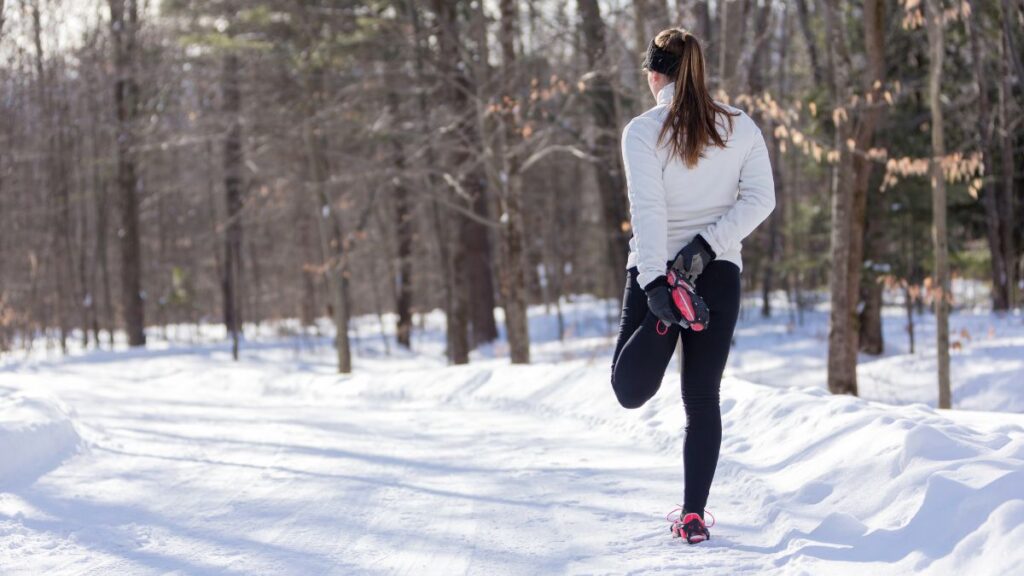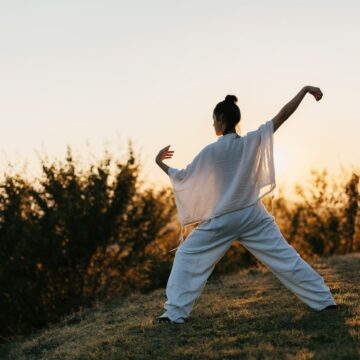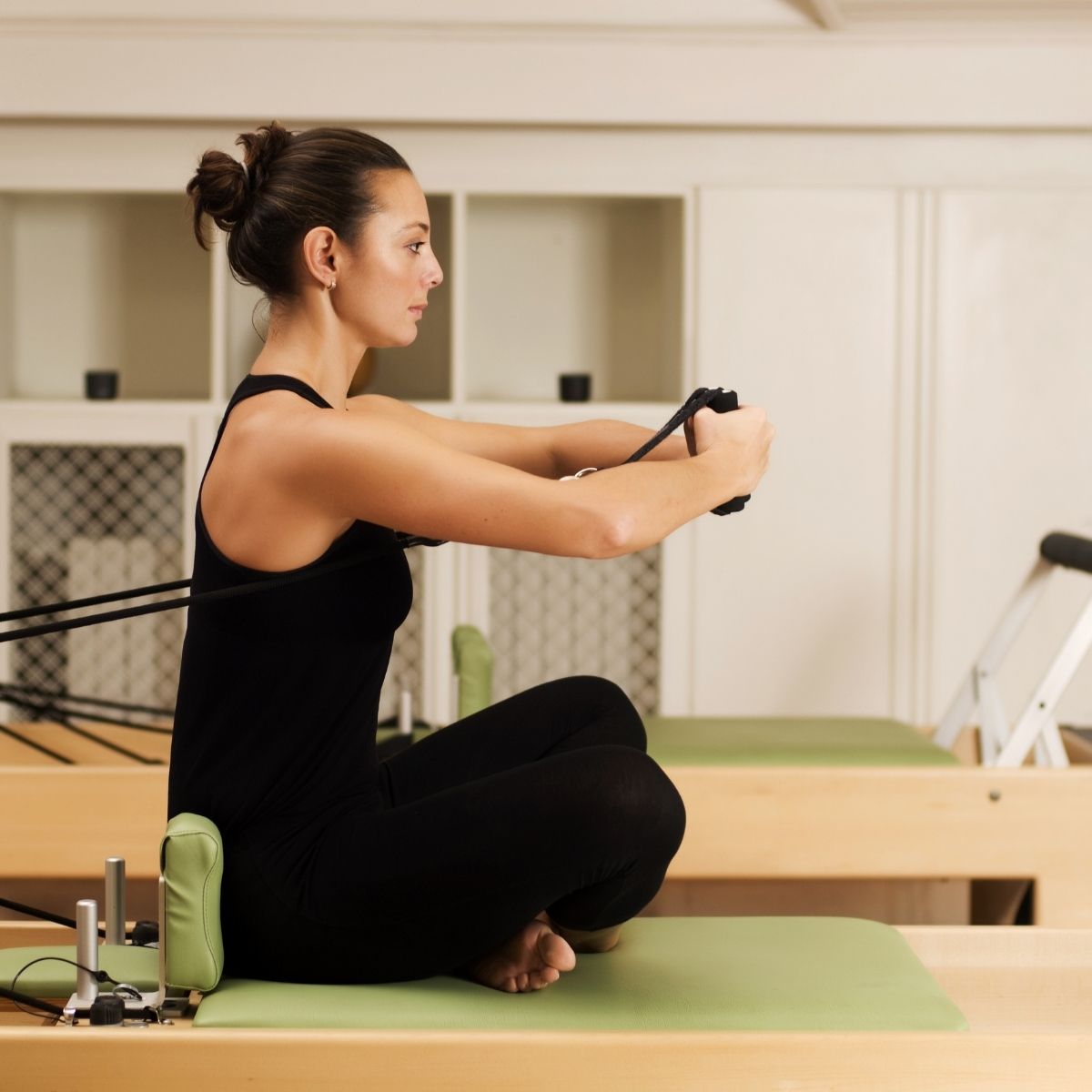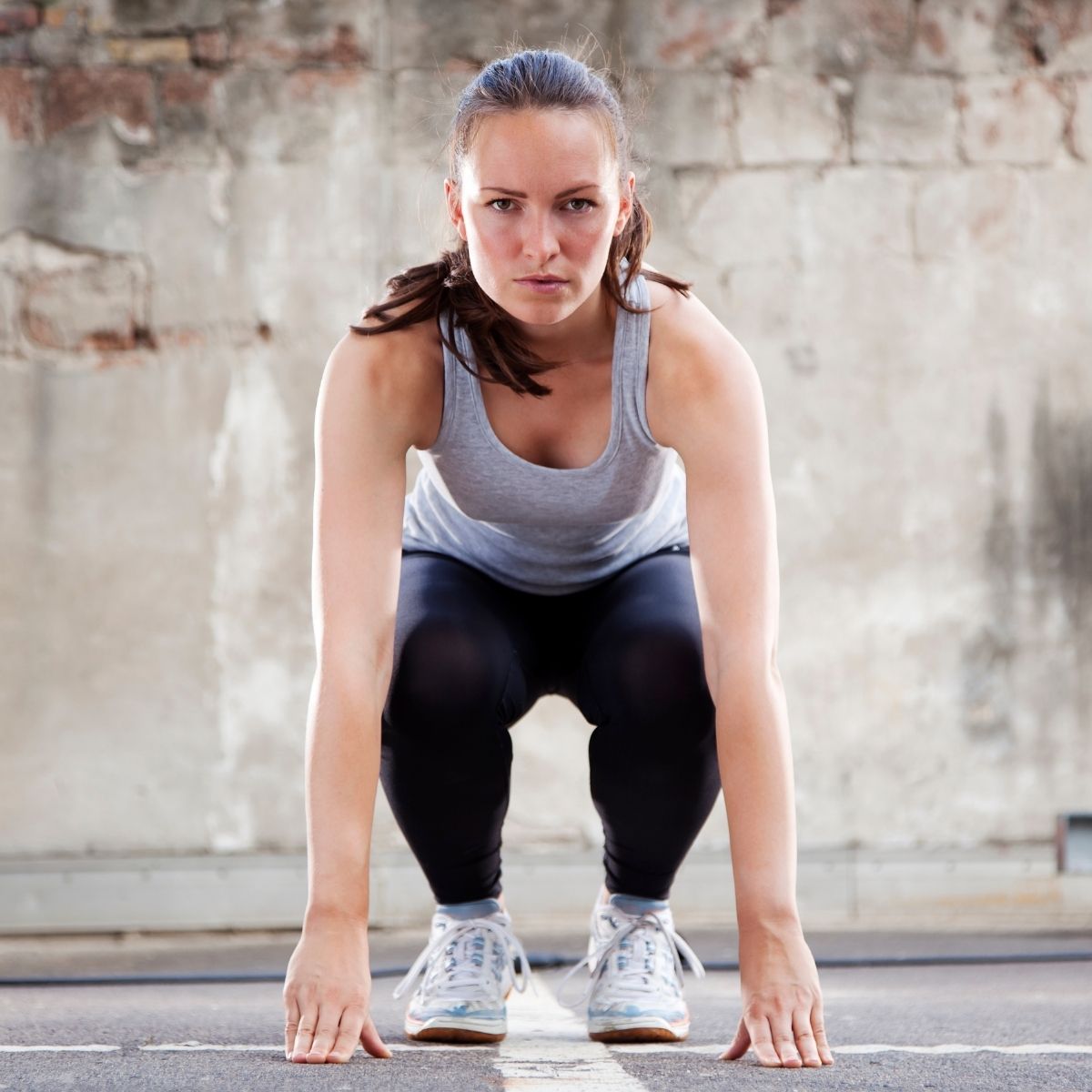The best mobility exercises for longevity start quite simply with what you can do comfortably. This is vitally important to help ensure you will not avoid making the mobility stretches a part of your daily routine!
Importance Of Mobility Exercises
Mobility exercises are all about working on the range of motion in your joints. It goes hand-in-hand with flexibility. While it’s important at every age, it becomes increasingly crucial the older we become.
Taking care of joints is often overlooked as a high school athlete with dreams of going pro, but the sooner you start making flexibility and function a daily part of your health and fitness routine, the better your quality of life will be in the long run.

Jump to:
Range Of Motion As We Age
Range of motion decreases as we age because of changes in connective tissue, loss of muscle mass, arthritis, and more. One study found that subjects lost about 6 degrees per decade, though it didn’t degrade their daily life. It’s normal to lose some ROM, but there are things you can do to limit the effects.
The National Institute on Aging says that lack of mobility is associated with lower rates of living at home vs. assisted care facilities; higher rates of disease, disability, hospitalization, and even death; and poorer quality of life.
These are all scary things, but don’t let this unnerve you! Let this be motivation for keeping those joints moving!

Basic Mobility Movements
Mobility stretches are an important part of any fitness routine, especially for those looking to increase longevity and maintain physical function as they age. Here are some of the best mobility stretches to promote longevity:
- Hip flexor stretch: This stretch targets the muscles in the front of the hip and can help improve posture and reduce lower back pain.
- Shoulder stretch: Stretching the shoulders can help improve range of motion and prevent shoulder injuries.
- Hamstring stretch: Tight hamstrings can lead to lower back pain and decreased mobility. Stretching the hamstrings can improve flexibility and reduce the risk of injury.
- Quadriceps stretch: This stretch targets the muscles in the front of the thigh and can help improve balance and stability.
- Calf stretch: Tight calf muscles can lead to foot and ankle injuries. Stretching the calves can improve ankle mobility and reduce the risk of injury.
- Spine twist: This stretch targets the muscles in the back and can help improve spinal flexibility and reduce back pain.
- Neck stretch: Stretching the neck can help relieve tension and reduce the risk of neck pain.
Incorporating these stretches into a daily routine can help improve mobility and reduce the risk of injury, promoting longevity and physical function over time.
It's important to remember to start slowly and only stretch to the point of mild discomfort, never to the point of pain.

Best Basic Stretches For Mobility
Here are five easy practices that go a long way in maintaining joint mobility and minimizing injury:
1. Spiderman Lunge to Thoracic Rotation
This sounds more complicated than it is. Start in a pushup plank position with your shoulders directly above your wrists and your belly button pulled into the spine to engage your core.
Make sure the pits of your elbow face forward for ultimate engagement.
Then, bring your left foot to the outside of your right hand or as far as you can get it forward. Aim to get your shin perpendicular to the ground.
Reach your left hand under your right arm as far as you can. Pause before twisting your upper body to move the same hand up to the sky over your bent leg, your eyes following your hand.
Repeat the move on the other side. Continue alternating for a minute at a time, at least once a day.
Move slowly and combine with breathwork for maximum effect.
Why it works:
Remember to really sink into the stretch. This move opens up your hips and chest. The twist at the end even adds some mobility practice for the upper body making this a full-body exercise.
You’ll also be engaging your abs and glutes the entire time for a bit of a strength workout.
2. Dynamic Pec Stretch
Start on your hands and knees. Thighs should be perpendicular to the ground, and shoulders should be in line over your wrists.
Stretch your right arm to the right, keeping your palm flat on the ground. Then, turn your head and upper body to the left, pushing your right shoulder into the ground. Repeat five times before moving on to the other side.
Why it works:
You should feel a nice stretch in the pec of your outstretched arm and bicep. You can use dynamic stretches to increase the ROM and blood flow to the area.
3. Lumbar Windshield
Lay on your back with your knees bent and your feet on the ground. Your feet should be slightly wider than shoulder-width apart.
Slowly drop your knees to one side and then to the other. Feet will come partially off the ground as your knees drop but you shouldn’t move otherwise.
Do 5-10 stretches on each side, and focus on getting your knees closer and closer to the ground over time.
To intensify this, start in the same position but put one ankle over the opposite knee in a figure four position. Drop your knees towards the opposite side of the foot that's still on the ground.
Then, come back to the starting position. Repeat five times before moving to the other side.
Why it works:
This is a great stretch for the spine and lower back. The figure four progression allows you to use the weight of one leg to push down the other knee. With both versions, you will also feel this in your hips and quads.
4. Scorpion Pose
Start by lying on your stomach with your arms spread out wide, perpendicular to your body, like a cross. Bend your left leg at the knee and bring the left foot up.
Pick the thigh and hip up slightly off the ground on the same side. Now rotate left, bringing your left foot down to the outside of your right leg and rotating your head with the movement.
Your left shoulder and hip will come off the ground to do this. Go back to the starting position and repeat on the other side. Do 4-6 times on each side.
Why it works:
This is a great stretch lower back with spinal rotation. Stretching your lower back is an important part of strengthening your core.
It also stretches the hip on the side of the lifted leg. As your chest naturally lifts when you rotate, you’ll also feel this in your pecs.
5. Various Wrist Movements
Many of us sit at computers for long hours. Even people who lift weights or do pushups regularly can have tight, achy joints.
Wrists aren’t something people often consider focusing on, but tight wrists and forearms can throw off everything and be very uncomfortable.
Here are a few options to relieve the tension and work on ROM:
- Wrist circles - five in each direction, slowly.
- Wrist waves - clasp hands together and do the wave with full flexion/extension 10 times.
- Wrist prayer stretch - put your palms flat against each other in a prayer position and move them downward until forearms are parallel–or further–to the floor five times.
Do these moves to warm up or cool down for or from a workout. These movements should never be painful.
When doing ROM exercises and stretches, you want to push yourself without getting to the point of major pain or discomfort.
Over time, you can slowly build up to deeper stretches or a wider ROM. Practice makes perfect!

Maximizing Mobility For Longevity
Remember, for maximum mobility, both strength and flexibility are important. Be sure to regularly incorporate both into your fitness program.
Strengthening the stabilizing muscles around a joint is especially key for preventing injury, as is working on balance. A good trainer can find moves that challenge both.





Leave a Reply